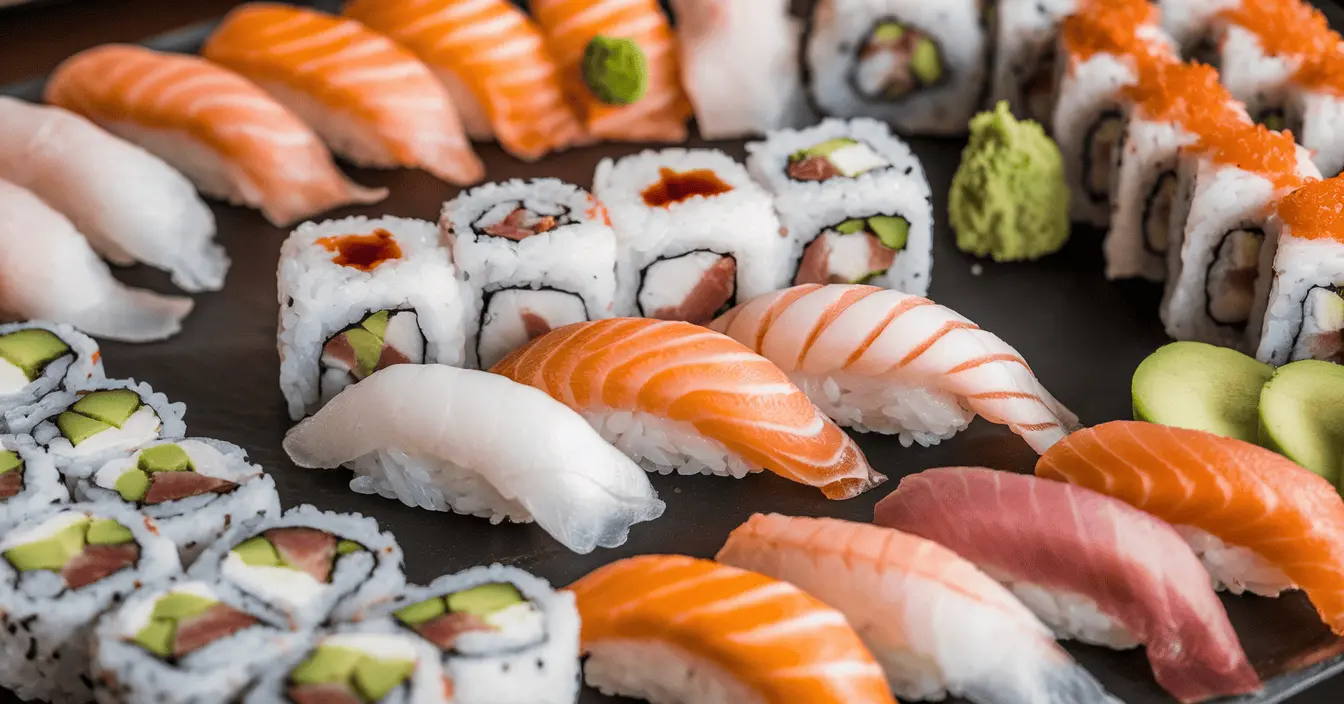Sushi is one of the most popular Japanese dishes worldwide, loved for its delicate flavors, fresh ingredients, and artistic presentation. But have you ever wondered: What are the three main ingredients in sushi?
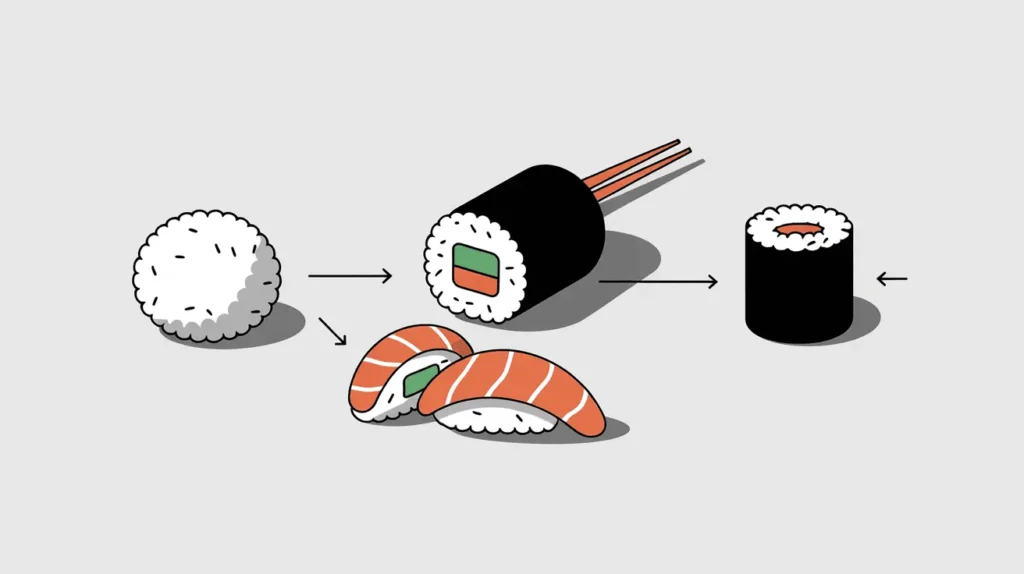
At its core, sushi consists of three essential ingredients:
- Sushi Rice (Shari) – The foundation of every sushi dish
- Nori (Seaweed Sheets) – The wrapper that holds sushi together
- Fish or Other Fillings – The main flavor component
These three elements create the perfect balance of flavor and texture, making sushi the beloved dish it is today. If you’re interested in other sushi variations, check out this Easy & Delicious Sushi Bake Recipe to see how sushi has evolved into a baked, deconstructed version!
1. Sushi Rice: The Foundation of Sushi
The most important ingredient in sushi is sushi rice, known as shari or sumeshi in Japanese. It provides the perfect balance of texture, stickiness, and mild sweetness.
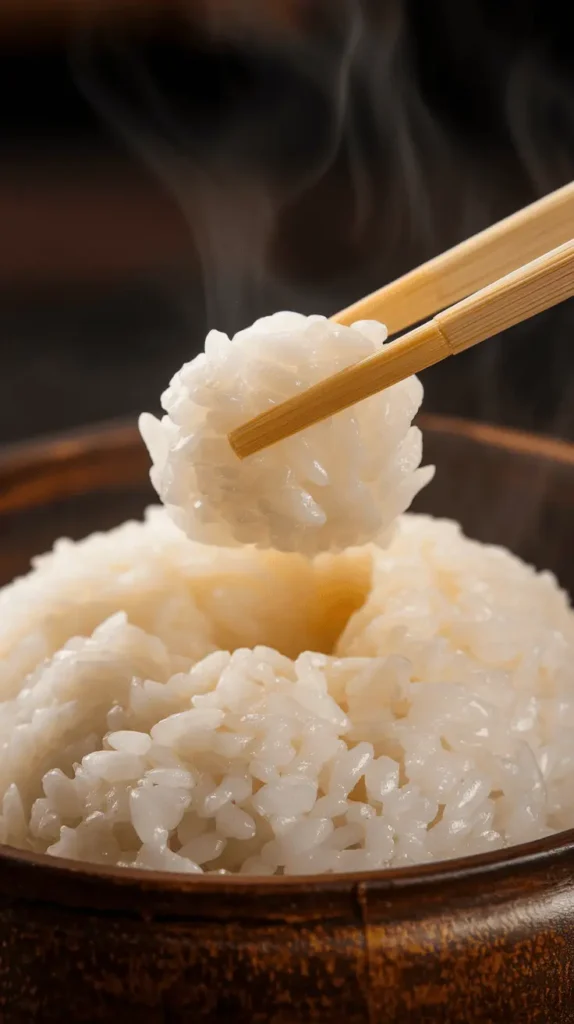
✔️ What Makes Sushi Rice Special?
- Made from short-grain or medium-grain rice
- Seasoned with rice vinegar, sugar, and salt
- Has a sticky texture, allowing sushi to hold its shape
🍚 How to Prepare Sushi Rice
- Rinse the rice thoroughly to remove excess starch.
- Cook the rice using a rice cooker or stovetop.
- Mix with sushi vinegar (a blend of rice vinegar, sugar, and salt).
- Let it cool before using it for sushi.
Want to perfect your sushi rice? Follow this detailed sushi rice preparation guide.
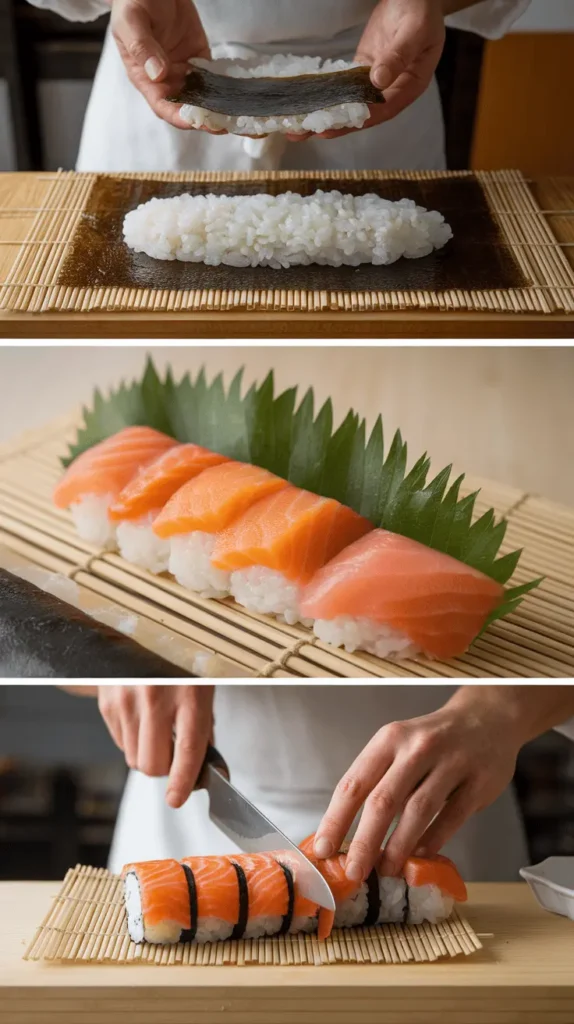
2. Nori: The Essential Wrapper
Nori is the thin, dried seaweed sheet that wraps around sushi rolls. It has a slightly salty, umami-rich flavor and adds structure to sushi.
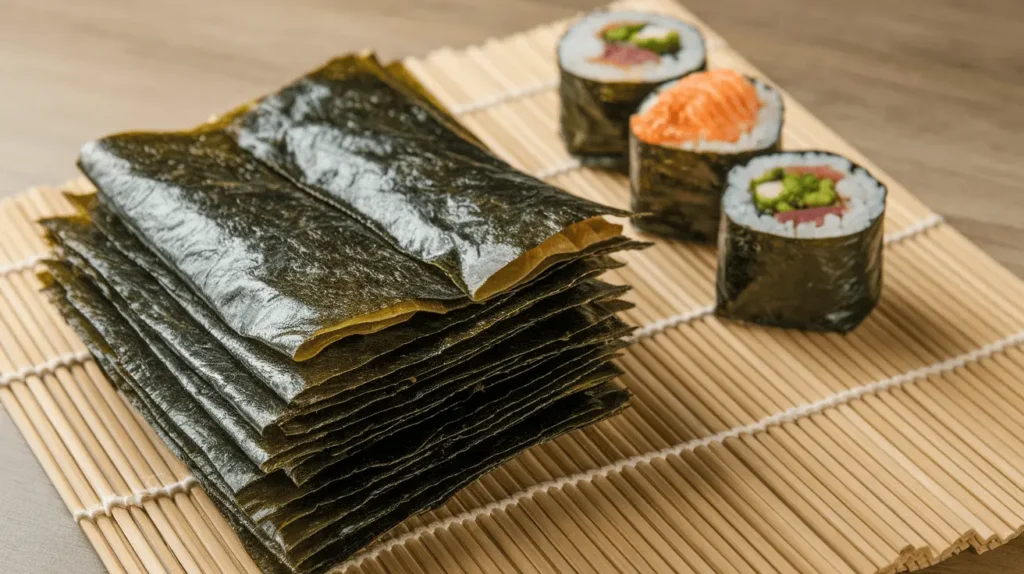
✔️ Why Is Nori Important?
- Provides stability for sushi rolls (maki sushi)
- Adds umami flavor and enhances the sushi experience
- Helps balance the moisture of sushi rice and fillings
🌿 How to Use Nori in Sushi
- Place nori on a bamboo sushi mat.
- Spread a thin layer of sushi rice over the nori.
- Add your fillings and roll tightly.
Want to know more? Here’s a comprehensive guide on nori and its role in sushi.
3. Fish & Other Fillings: The Heart of Sushi
The final essential ingredient in sushi is fish or other fillings, which provide the main flavor.
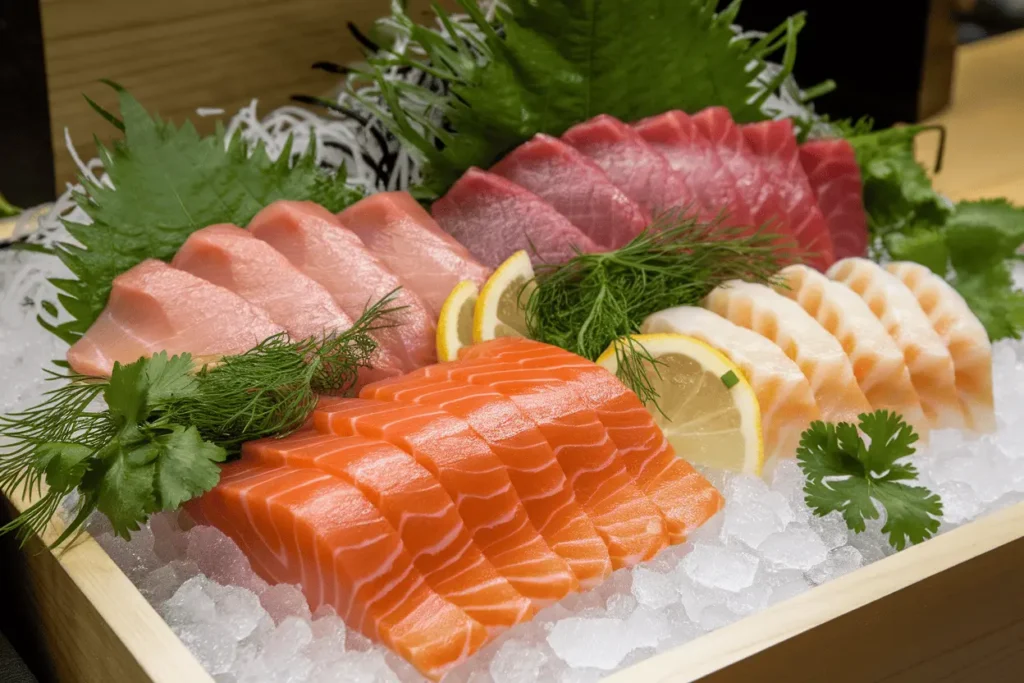
✔️ Traditional Fish Options for Sushi
- Tuna (Maguro) – Rich in flavor and a sushi staple
- Salmon (Sake) – Mild, buttery texture
- Yellowtail (Hamachi) – Firm and slightly sweet
- Eel (Unagi & Anago) – Savory with a hint of smokiness
🍣 Choosing Sushi-Grade Fish
If you plan to use raw fish, it must be sushi-grade to ensure safety. Learn how to choose sushi-grade fish with this expert guide.
🌱 Vegetarian & Alternative Fillings
Not all sushi includes fish! Here are some popular non-fish fillings:
- Avocado – Creamy and smooth
- Cucumber – Crisp and refreshing
- Tamago (Japanese Sweet Egg) – Slightly sweet and fluffy
- Tofu – Great for vegan sushi options
For a creative twist, consider trying sushi bake—a warm, casserole-style sushi dish that combines sushi rice, seafood, and creamy sauces.
Bonus: Additional Ingredients & Sushi Variations
While sushi rice, nori, and fish are the essential elements, other ingredients enhance the sushi experience:
🍱 Common Sushi Condiments & Toppings
- Wasabi – A spicy Japanese horseradish
- Soy Sauce – For dipping and seasoning
- Pickled Ginger (Gari) – Cleanses the palate between bites
🍣 Popular Sushi Types & Variations
- Maki (Rolls) – Sushi wrapped in nori
- Nigiri – Hand-formed sushi with fish on top
- Sashimi – Sliced raw fish, served without rice
Bonus: Additional Ingredients & Sushi Variations
While sushi rice, nori, and fish are the essential elements, other ingredients enhance the sushi experience:
🍱 Common Sushi Condiments & Toppings
- Wasabi – A spicy Japanese horseradish
- Soy Sauce – For dipping and seasoning
- Pickled Ginger (Gari) – Cleanses the palate between bites
🍣 Popular Sushi Types & Variations
- Maki (Rolls) – Sushi wrapped in nori
- Nigiri – Hand-formed sushi with fish on top
- Sashimi – Sliced raw fish, served without rice
If you’re curious about how temperature affects sushi flavors, check out this guide on whether sushi bake should be eaten hot or cold to understand how different ingredients change in texture and taste.
Final Thoughts: Mastering the Three Main Sushi Ingredients
Sushi is an art form that relies on three main ingredients:
✔️ Sushi Rice – The foundation of every sushi dish
✔️ Nori – The wrapper that holds sushi together
✔️ Fish or Fillings – The heart of the sushi experience
By mastering these ingredients, you can create delicious, authentic sushi at home. If you’re looking for unique sushi variations, try making sushi bake or explore how sushi flavors change when served hot vs. cold in this detailed guide. 🎌 🍣
